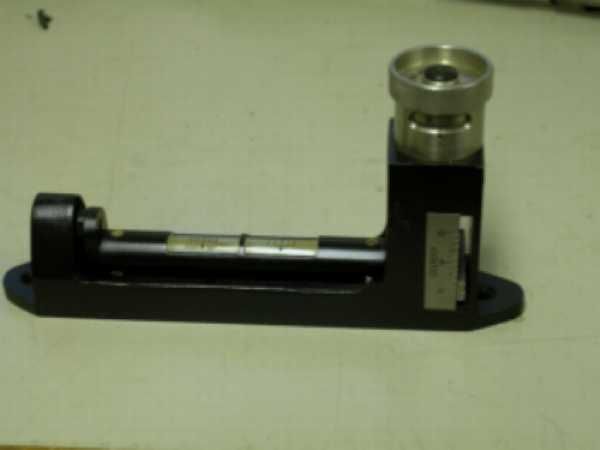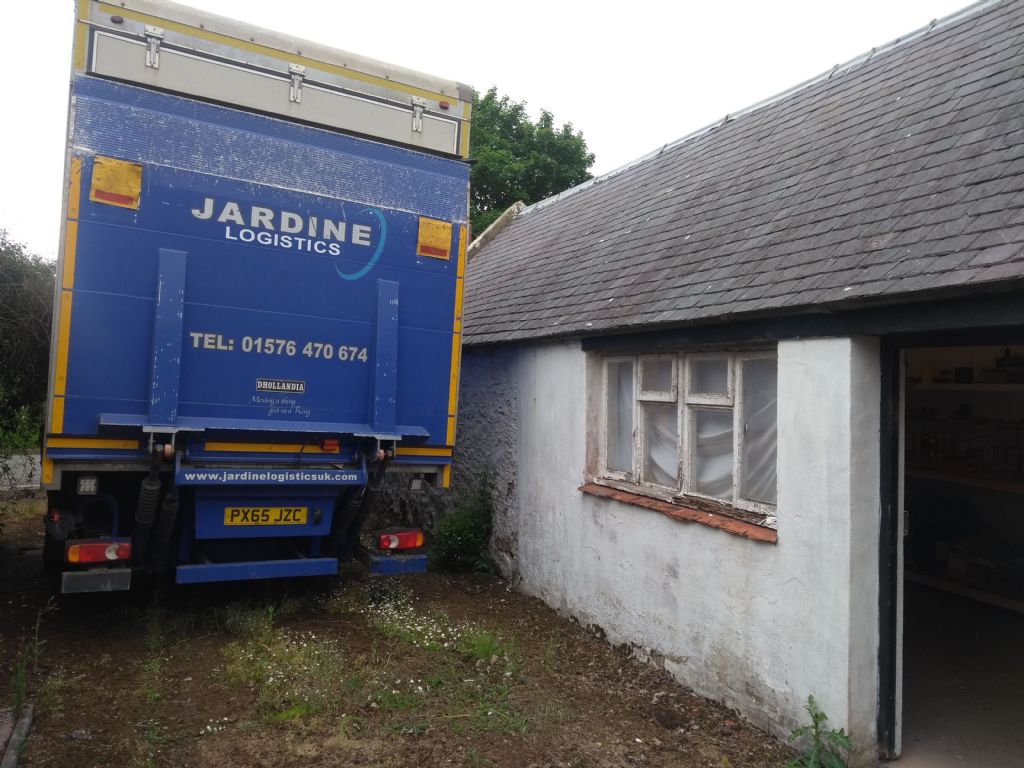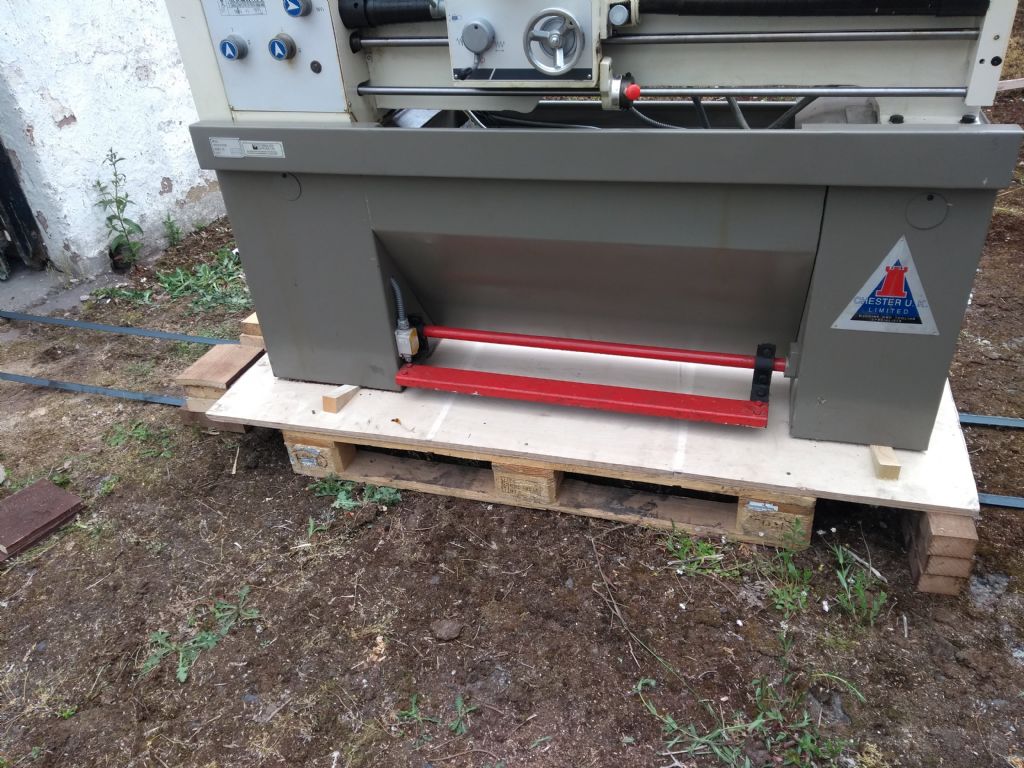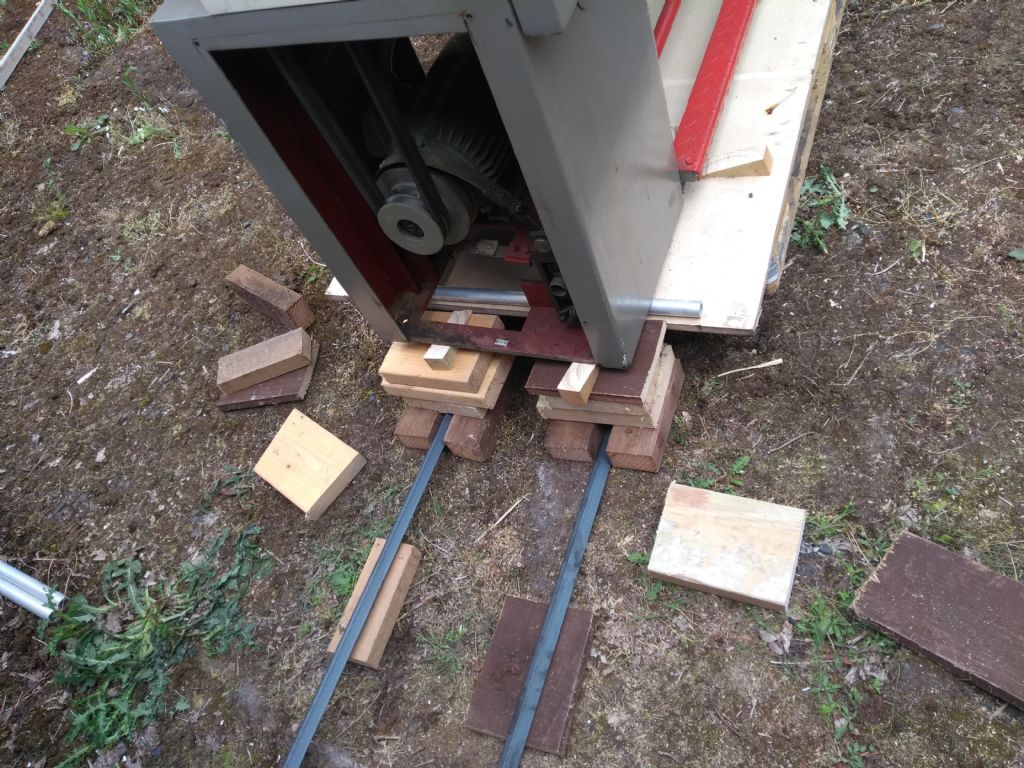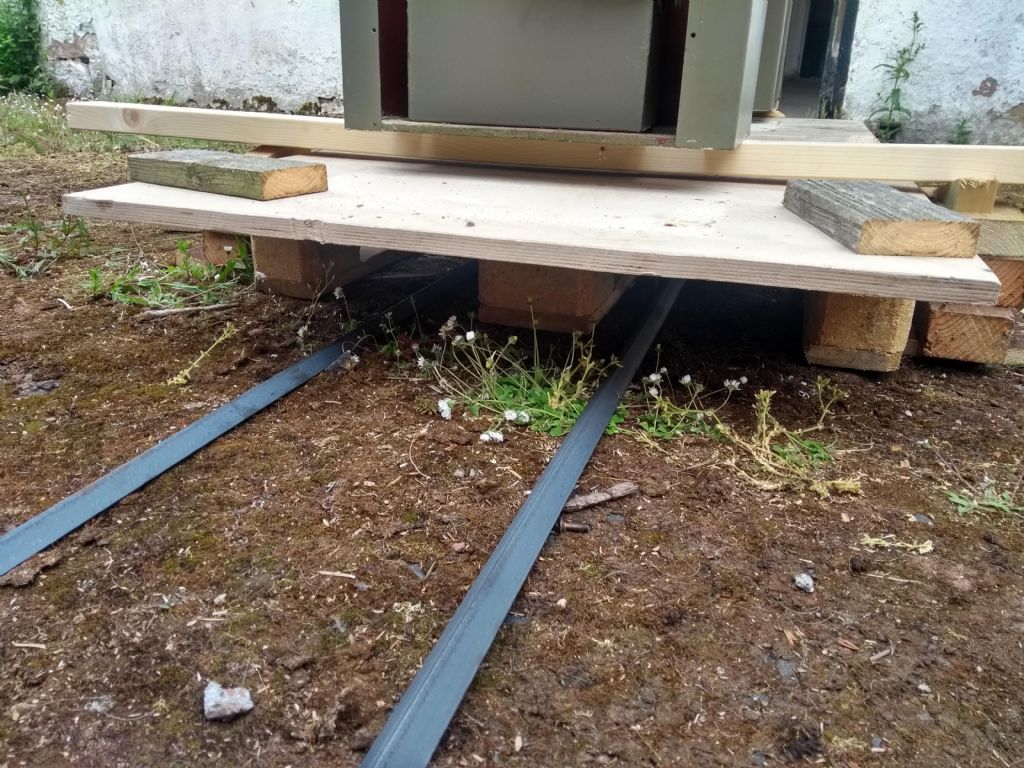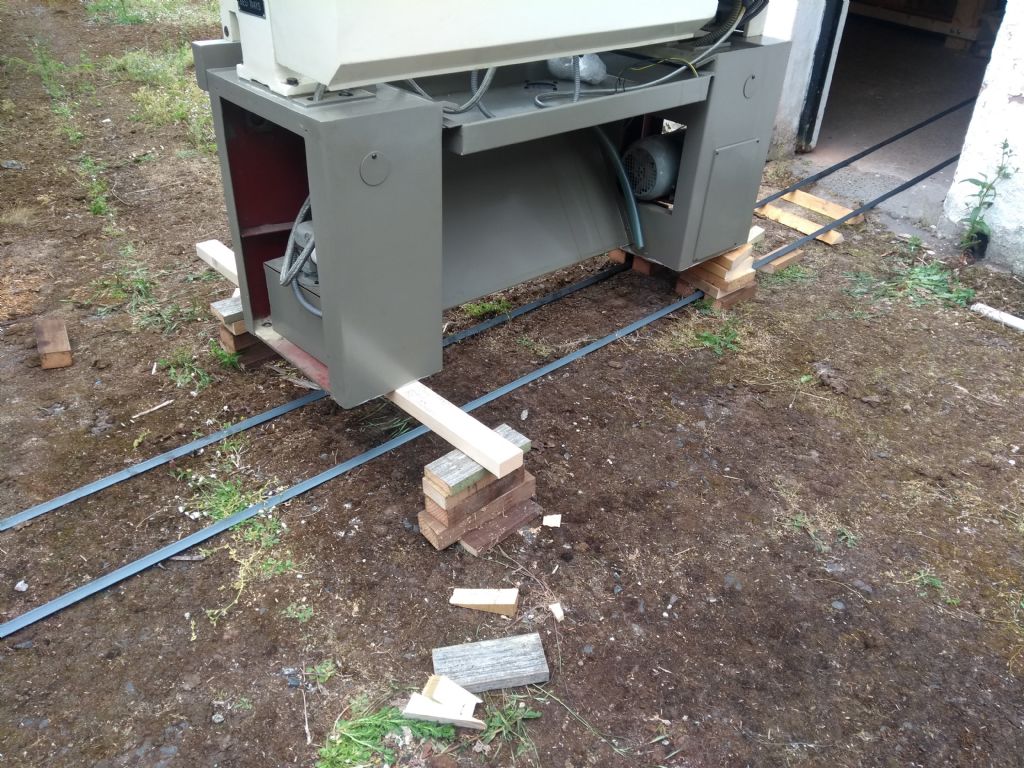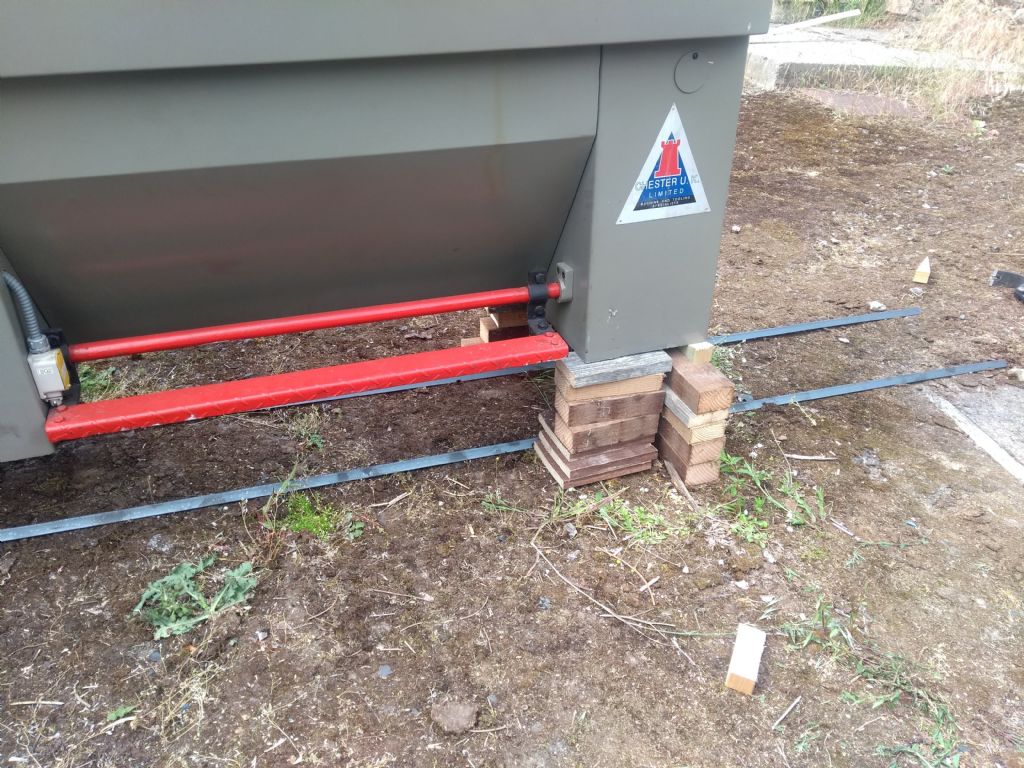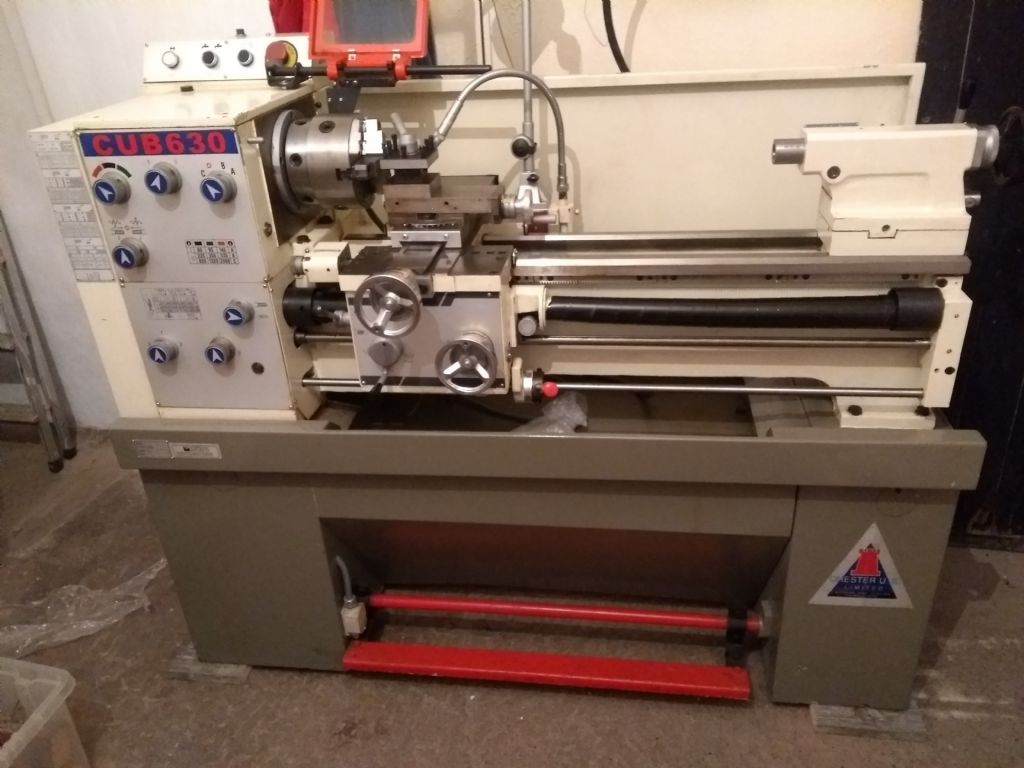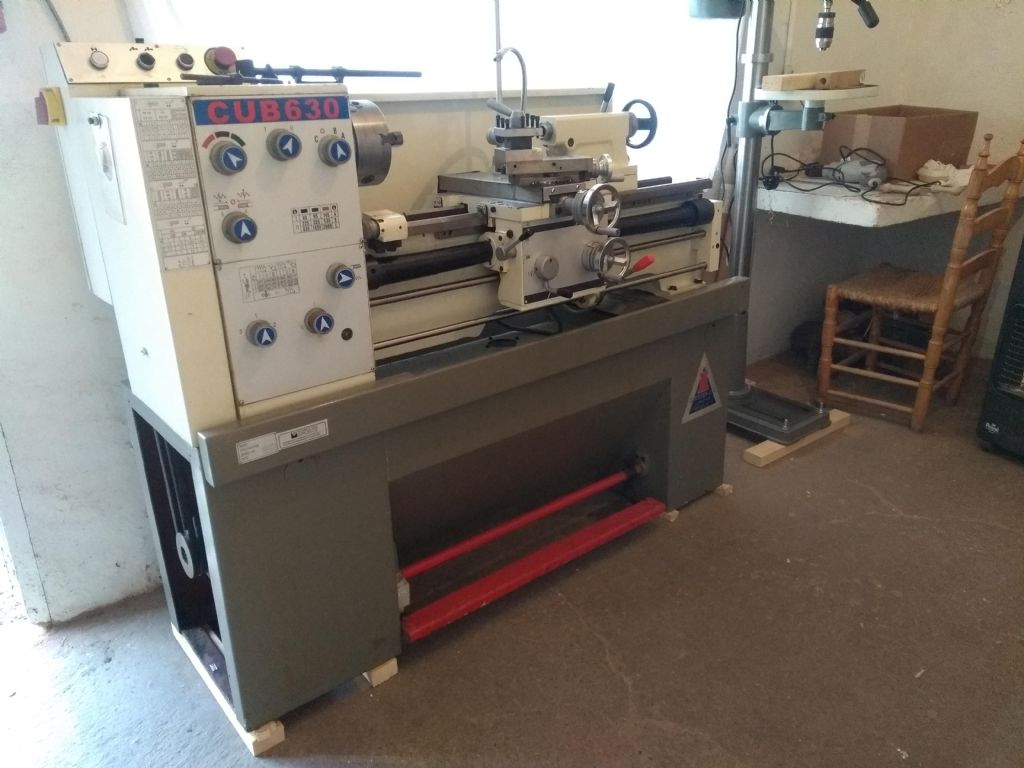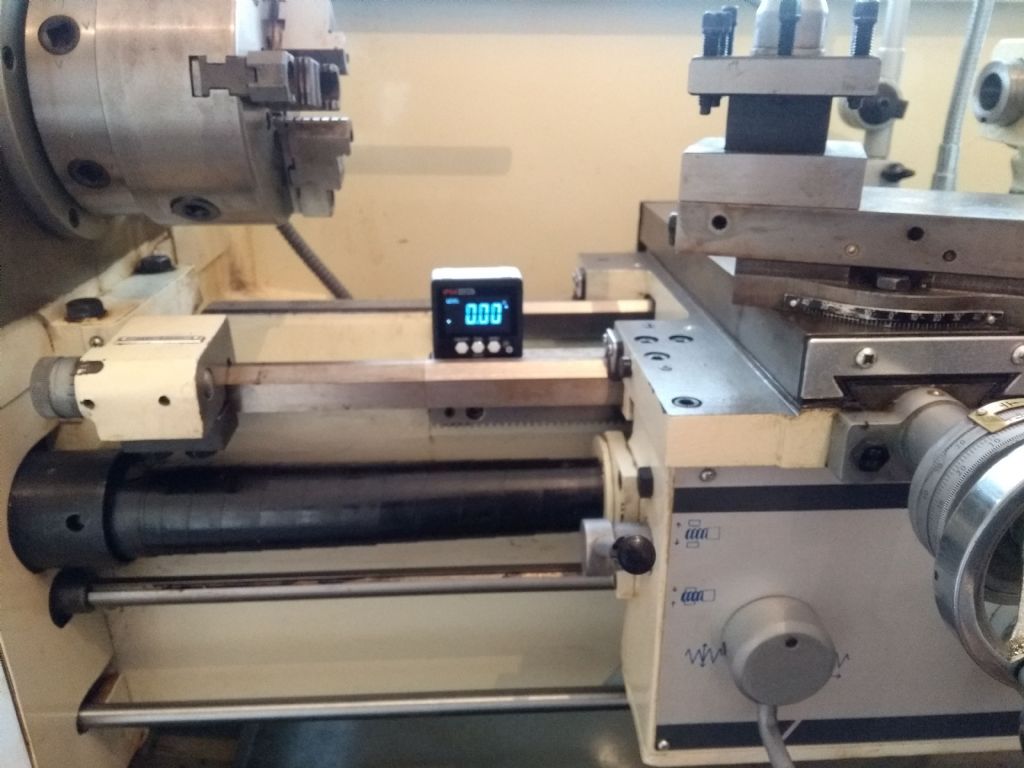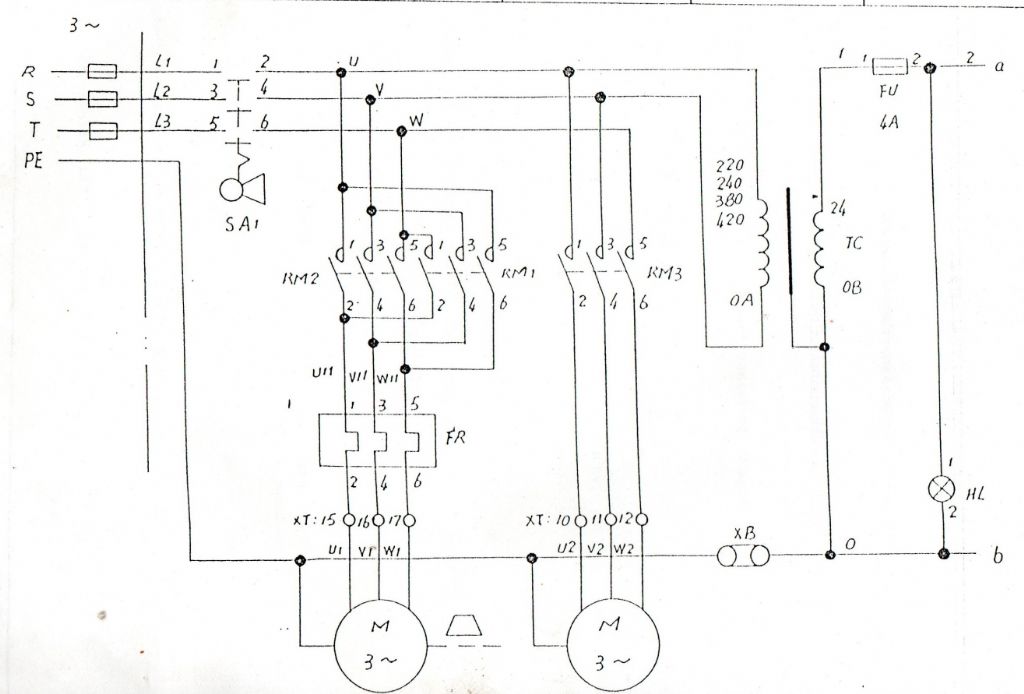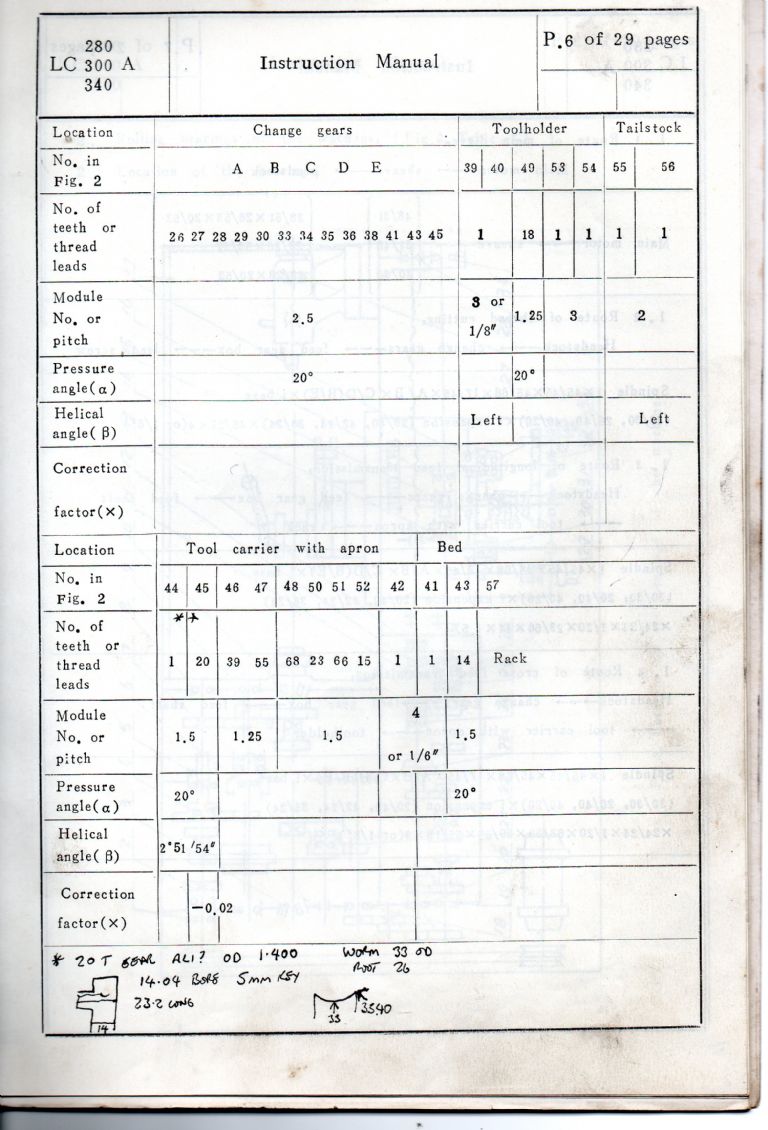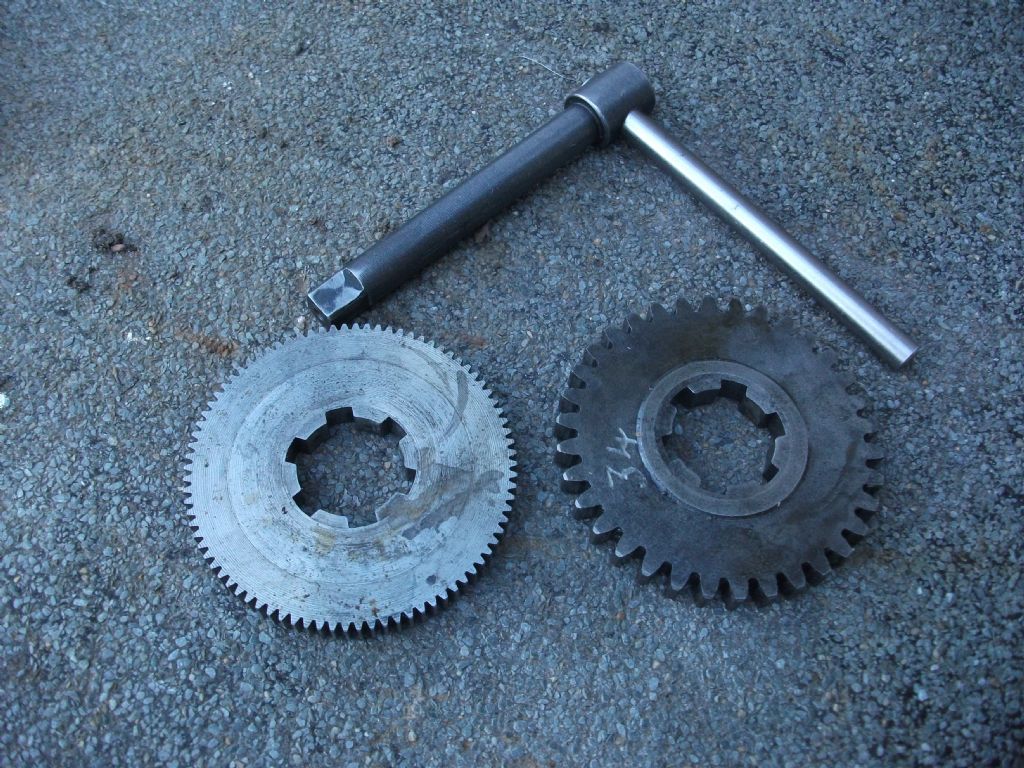Well, after much twiddling of thumbs, last Thursday I got a call asking when I would like to take delivery: well, no point owning a lathe sitting several hundred miles away, so on Monday I got another call from a jovial delivery driver intimating he was fifteen minutes away and would I put the kettle on. Gladly.
He took one look at the narrow space between my workshop and the garden wall: "aye, nae bother", and proceeded to reverse a 12-tonne truck in as if it were a Mini into the Bay of Biscay.

He drank his tea, apologised for not having anything to lift the lathe off the pallet "or I'd get that in there nae bother", jumped in his truck and zoomed off, leaving this:

Gulp. I finished my tea and set to work. I hadn't planned on that big ol' sheet of ply being in the way of getting the cabinet jacked up, so plan B was hastily developed.

I laid down the rails for the machine to slide on (ominous foreshadowing alert), plaved blocks for the headstock end to repose on, and began jacking the machine up. I had made a lot of wedges from goodness knows what bit of 6×2 construction lumber, and this was the first thing I learnt: it's worth making wedges out of a decent hardwood, and making them a decent size. Wedges twice the size would have made life so much easier.

The machine rolled forward using a bit of random aluminium tubing. Now the tailstock end was a problem: how to support it so I could get the pallet out? After some guesstimation, I was fairly confident a bit of C16 timber would take the weight. It didn't look so scary like this:

But after carefully dragging the pallet out and seeing this:

Well, to my simple mind, lathes should be on the ground, not levitating up in the air. (By the way, Clive mention a removable suds tray. It can indeed be removed, but only from the back. It was only just before I finally parked it for good I realised it had been put back in the wrong way round, explaining why the drain hose is attempting to cool the motor rather than draining to the suds pump visible on the left).
Getting it back down was precarious. I should have been a lot more careful about blocking it up, as you can see here:

As we worked down, that pile of blocks next to the footbrake ended up getting pushed over as the lathe tried to move sideways from the repeated lifting and setting down. About half way down, the pile gave way – fortunately it moved all of a centimetre before landing on my pry-bar blocks. It wasn't until I saw this photo in retrospect that I realised quite how careless I was being with the height I had raised the lathe. Incidentally, another thing I learnt doing this was that saving a tenner on a pry bar seems like a false economy when halfway through a move you reflect that if it breaks, it has 500kg of lathe on one end and a bag of flesh (mine) on the other. That said, the adjustable pry-bar was really helpful, and I'm glad I didn't just have a plain one. FInally, however, I had it down on the rails:

At this point, I had somewhat optimistically expected that the lathe might glide upon the rails as a swan upon the lake, perhaps with me providing a gentle hand to steer it. Nope. I put my shoulder down and pushed. Nope. I roped in my mother, more in hope than expectation given that she weighs about the same as a dormouse and could do with two new hips and a lung transplant. Our combined efforts moved it a good half inch before we called a halt. Plans C, D, E, and F were quickly drawn up and discarded before we returned to the wisdom of the ancients, specifically Archimedes. If one inserts a pry-bar between the base and the ground, and then lifts up, the lathe moves forwards 2-3cm each time. As a form of locomotion it leaves much to be desired, but a few hours later, it was inside the workshop, the door could be locked, and I retreated inside for a most necessary libation.

peagreenpete.


